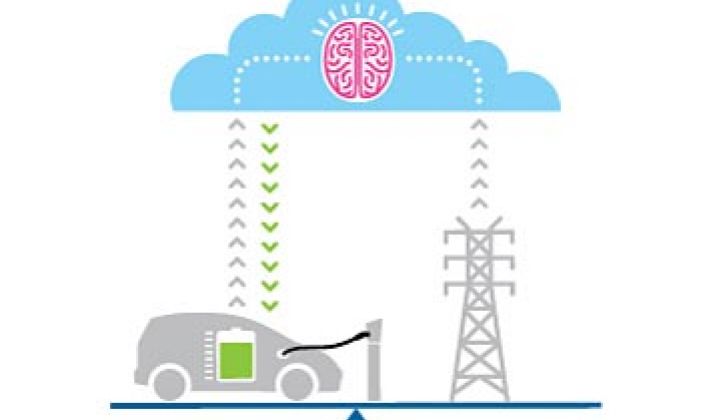Electric vehicles are inherently connected to the power grid. But truly integrating the cars into grid operations is another matter altogether.
IBM, Honda and Pacific Gas & Electric have teamed up to test the communications between the Honda Fit’s onboard telematics and the utility’s back office. The pilot, which involves fewer than 10 real cars and more simulated scenarios, is investigating the connection between the car and the utility to receive messages about charging and grid events.
“The primary focus of what we’re doing is, we’re communicating the signal directly through the vehicle,” said Clay Luthy, global distributed energy resource leader for energy and utilities at IBM. “This provides a utility ultimate flexibility to send load-shed signals.”
The connection directly to the car, rather than through a charging station, adds another level of flexibility for the utility to be in touch with the roaming loads in their territory. IBM’s cloud-based platform connects through cellular to the car and also back to the utility.
The pilot will test sending and receiving information about the battery state, which can then help create an optimized charging schedule. Although the issue isn’t critical for utilities today, if EVs take off in the market, utilities will have to manage their loads using more than just price signals. With this system, for instance, the utility system could know when cars have a low battery life to inform predictive load forecasting.
"This pilot project with IBM and Honda will help us demonstrate that third-party providers have the systems and capabilities to help meet some of the challenges that electric vehicles could place on the power grid as their adoption increases in the coming years," Saul Zambrano, senior director for consumer products for PG&E, said in a statement.
Although Honda is just one car maker and PG&E is just a single utility, IBM is hoping to be the bridge between the two industries to offer the connection utilities will need. It is unrealistic for each utility to test out connections to individual on-board telematics in every EV that comes to market.
For many utilities, it could be years, at the earliest, before this level of sophistication is needed. San Diego Gas & Electric, which has about 1,400 plug-in hybrids and electric cars in its territory, is currently using differentiated pricing for electric vehicle owners and has not had any significant issues.
But the issues are expected to come when there are tens of thousands, if not millions of EVs on the road. The pilot is testing the connection between car and grid, but it is not going as far as to look at vehicle-to-grid or vehicle-to-house applications, in which the car’s battery would be used by the utility or homeowner.
IBM is in talks with other automakers, but the car companies are also making their own plans. BMW has partnered with Tendril for an EV-smart grid demo and General Motor’s OnStar service has opened up the application programming interfaces to a range of grid-related services, including demand response, time-of-use rates, charging data exchange and “aggregated services” like finding charging spot locations.
Nissan is partnering with AT&T, General Electric and others, and Ford has also launched an EV charging app developed in conjunction with Airbiquity earlier this year. But IBM sees the utility-to-car connection as the next step. It’s still up for debate when that step will become necessary.



